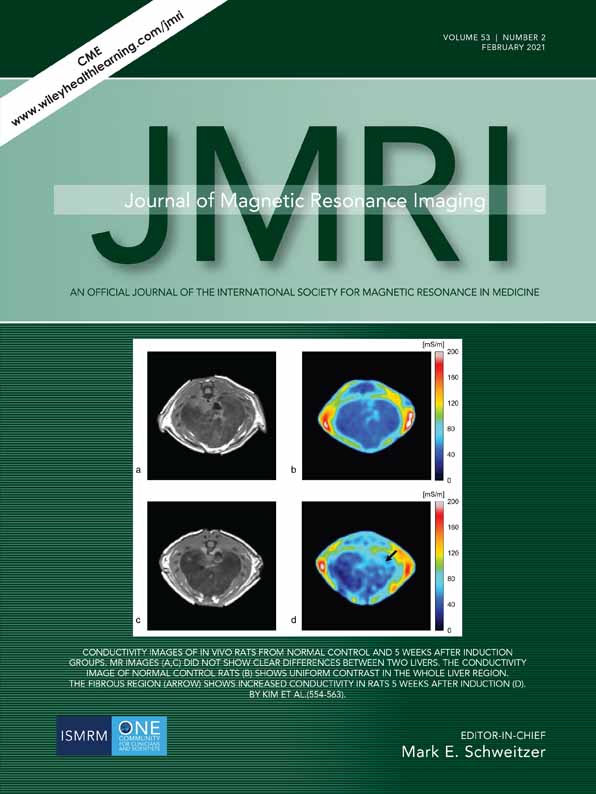Heart Failure With Preserved Ejection Fraction in Hypertension Patients: A Myocardial MR Strain Study
Contract grant sponsor: Capital's Funds for Health Improvement and Research; Contract grant number: CFH 2020-2-4034; Contract grant sponsor: Construction of Key Laboratory (Cultivation) of the Chinese Academy of Medical Sciences; Contract grant number: 2019PT310025; Contract grant sponsor: National Natural Science Foundation of China; Contract grant numbers: 81971588 and 81771811; Contract grant sponsor: Capital Clinically Characteristic Applied Research Fund; Contract grant number: Z191100006619021; Contract grant sponsor: National Foreign Expert Talent Project; Contract grant number: G20190001630; Contract grant sponsor: Education Reform Project of Peking Union Medical College; Contract grant number: 10023201900204; Contract grant sponsor: Clinical and Translational Fund of Chinese Academy of Medical Sciences; Contract grant number: 2019XK320063, funded in part by NHLBI/NIH/DHHS.
Abstract
Background
Despite current recommendations for heart failure with preserved ejection fraction (HFpEF), few studies have demonstrated the ability of MRI to identify subtle functional differences between HFpEF with essential hypertension (HFpEF-HTN) patients and hypertension patients (HTN).
Purpose
This study aimed to detect and evaluate HFpEF in patients with HTN using feature-tracking (FT) and to ascertain optimal strain cutoffs for the diagnosis of HFpEF-HTN.
Study Type
Retrospective study.
Population
Three groups (84 with HFpEF-HTN; 72 with HTN; and 70 healthy controls).
Field Strength
1.5T, steady-state free precession (SSFP), and half-Fourier single-shot turbo spin-echo (HASTE) sequences.
Assessment
All patients underwent laboratory testing and imaging protocols (echocardiography and MRI). FT-derived left ventricular (LV) strain and strain rate (SR) were measured and compared among the three groups with adjustment for confounding factors.
Statistical Tests
Kolmogorov–Smirnov's test, independent-sample t-tests, one-way analysis of variance (ANOVA), Pearson's correlation coefficient, area under the receiver-operator characteristic (ROC) curve (AUC), and logistic regression.
Results
Compared to 72 HTN patients and 70 healthy controls, HFpEF-HTN patients (84 patients) demonstrated significantly impaired LV strains (except for global peak systolic radial strain, GRS, P < 0.05 for all). Only LV global peak systolic longitudinal strain (GLS) was significantly impaired in HTN patients vs. controls (P < 0.05). The global peak systolic circumferential SR (sGCSR) showed the highest diagnostic value for the differentiation of HFpEF-HTN patients from HTN patients (AUC, 0.731; cutoff value, −1.11/s; sensitivity, 56.0%; specificity, 84.7%). Only global peak early diastolic longitudinal SR (eGLSR) remained independently associated with a diagnosis of HFpEF-HTN in multilogistic analysis. The major strain parameters significantly correlated with LV ejection fraction, end-systolic volume index, and N-terminal pro-brain natriuretic peptide (P < 0.05 for all) and also demonstrated differences between NYHA functional class.
Data Conclusion
HFpEF-HTN patients suffer from both systolic and diastolic cardiac dysfunction. FT-derived strain parameters have potential value for the diagnosis and risk stratification of HFpEF-HTN patients.
Level of Evidence 3.
Technical Efficacy Stage 2.




